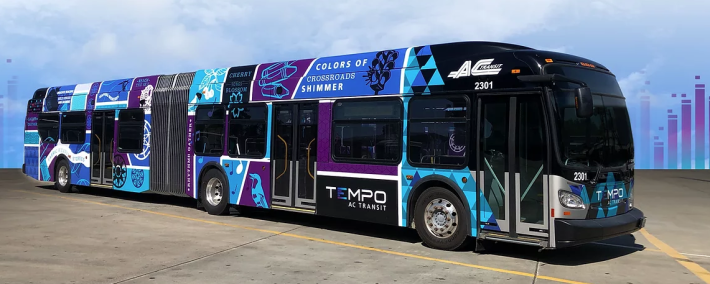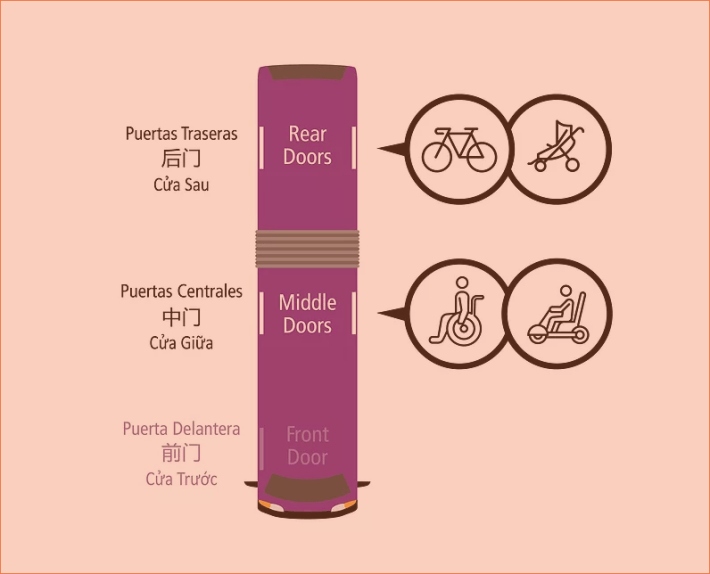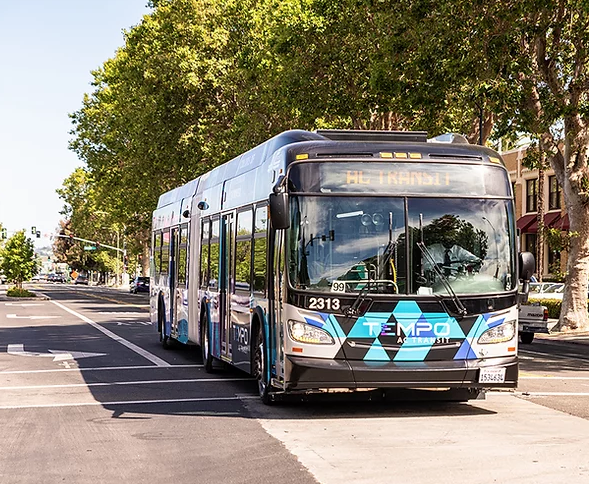The long-awaited 'Tempo' BRT line of AC Transit opened this weekend between downtown Oakland and San Leandro on International Boulevard. The project cost $232 million to build.
From AC Transit's "Tempo" service release:
The Alameda-Contra Costa Transit District (AC Transit) invites members of the media to a video and photography opportunity on the all-new AC Transit Tempo system, which begins service to riders on Sunday, August 9. The vibrantly colored 60-foot hybrid technology coach will travel the Tempo corridor, highlighting its network of bus-only lanes, a first of its kind view of how Tempo bus docking achieves train-like service, the artistry of stations, and much more.

That phrase "train-like service" coupled with "for less money," was popular a decade ago. However, given the experience in the East Bay and elsewhere, it's now clear that constructing true BRT, with train-like amenities and new pavement, ends up costing just as much as rail.
On Sun., Aug. 9, #ACTransit Tempo, our new, world-class #bus rapid #transit system, begins service b/w #Oakland & #SanLeandro. This 9.5 mile system will serve over a dozen n’hoods and connect to 20+ local @rideact lines!
— Rideact BRT has moved to @rideact (@rideactBRT) August 7, 2020
We look forward to welcoming you aboard! pic.twitter.com/jxiX9V0qBf
As previously reported, the International BRT line got final approval from the Oakland City Council in 2012. At the time, East Bay BRT was expected to be completed in 2016 at a cost of between $152 million and $172 million. But the final cost, at about $24.4 million per mile, is as much as non-electrified light rail. See "The Myth of the Magic Bus" for comparisons of non-electrified BRT with non-electrified light-rail lines in New Jersey, Ottawa, and elsewhere.
Meanwhile, a bit more on the new service from the Tempo web page:
Tempo is built for reliability so you can connect to the things that move you.
- Bus-only lanes increase travel speed and reduce delays caused by traffic.
- New traffic signal technology enables faster bus travel by adjusting signals to allow buses to bypass traffic
- Riders pay before boarding by tagging their Clipper card or buying a ticket at the station, speeding the boarding process.
The project also included many street upgrades, including new lighting, high-visibility crosswalks, new landscaping, and artwork.
The new buses will take three bikes per bus. Cyclists are asked to board with their bikes at the rear doors, as seen below.

There are onboard bike racks on the bus. More from the service's web page:
Multi-door boarding minimizes crowding. To further ease the boarding process, some doors are designed for certain riders. Here are the details on where you should board:
- Middle doors: Riders with mobility devices or who require priority seating should board here; other riders are welcome to board after these riders.
- Rear doors: Riders with bikes and strollers should board here; other riders are welcome to board here as well.
- Front door: The front door will only be used in an emergency. For boarding during regular service, please use the middle and rear doors.
The service will be free through November, after which normal AC Transit fares will apply.
For more reading, check out the Mercury News coverage.





